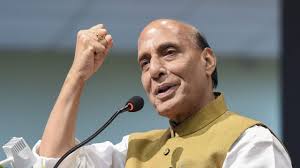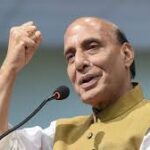
Geopolitical pressures driving Domestic innovation in India-S.K. Singh, ex-Scientist – DRDO and Social entrepreneur
Geopolitical competition is compelling India to shift from being a technology consumer to a technology powerhouse. This is done by balancing strategic partnerships with advanced economies while simultaneously building indigenous capabilities for self-reliance in critical sectors. This approach ensures India can navigate global power dynamics while protecting its national and economic interests and driving domestic innovation. Geopolitical dynamics are significantly accelerating India’s technological development and innovation by creating both compelling pressures and unprecedented opportunities.
A strategic approach of multi-alignment and prioritizing technological self-reliance, Atmanirbhar Bharat, is allowing India to leverage global shifts for its own benefit. It is the soft diplomatic power of India supported by critical indigeneous military technology ensured taking over indirect control of Bagram Air base in Afghanistan, which has become a central attraction of discussions for defence analysts across the globe.
Leadership of the Global South : By deploying successful, homegrown Digital Public Infrastructure (DPI) such as UPI and Aadhaar, India is solidifying its position as a technology leader for the Global South. This “tech diplomacy” helps shape global digital norms and showcases Indian innovation as an exportable model for other developing countries.
• Data sovereignty and cybersecurity : Growing concerns over data security and potential foreign surveillance have led to proactive policies to secure India’s digital infrastructure. This has resulted in the banning of certain foreign apps and a push for indigenous solutions and localized data storage. The rise of company like Zoho will take over the market size captured by big American conglomerates in no time as India decide the market through its population.
• Defense modernization : The need to modernize its defense capabilities to counter security threats, particularly along its borders, has fueled innovation in aerospace, cybersecurity, and AI. India is transitioning from a defense importer to a more self-reliant producer and exporter of defense technology. The success of the indigenous programs in missiles and other tactical warfare has turned the table and India is now amongst the top 3 Defence power.
• Supply chain disruptions and rivalry with China : The fragility of global supply chains exposed by the COVID-19 pandemic and rising tensions with China has pushed India to reduce its dependency on imported technology. This rivalry is a catalyst for India to invest heavily in domestic manufacturing, especially in critical areas like semiconductors, electronics, and batteries for electric vehicles.
• Technological partnerships with advanced economies : India is forging strategic collaborations with a range of countries to gain access to cutting-edge technology. Key partnerships include :
– The iCET (Initiative on Critical and Emerging Technologies) with the United States focuses on cooperation in AI, semiconductors, 5G/6G, and space.
– The Trade and Technology Council (TTC) with the European Union facilitates dialogue and cooperation on trade, technology, and security.
– Agreements with Japan are strengthening India’s semiconductor ecosystem.
Government initiatives leveraging geopolitics
• Production-Linked Incentive (PLI) schemes : The PLI initiative offers incentives to domestic and foreign companies to boost local manufacturing across various sectors, from electronics and telecom to medical devices. This policy directly responds to geopolitical pressures for supply chain diversification.
• India Semiconductor Mission (ISM) : Launched with significant funding, the ISM aims to build a domestic semiconductor ecosystem to counter import vulnerabilities and position India as a global manufacturing hub.
• India AI Mission and Quantum Mission : These initiatives fund research and development in next-generation technologies like AI and quantum computing to ensure India is not left behind in the global technology race.
• Critical Minerals Mission : To counter China’s dominance in rare earth materials, India is boosting domestic exploration and forming diplomatic partnerships with countries rich in critical minerals.
The world order is changing at a rapid rate, where a unipolar world dominated by the United States (US) is shifting into one with a bipolar nature, where China remains as the main competitor as to the existing world order. As India is growing and coming into contact with traces left by China, it challenges the start of a multipolar world.
Operation Sindoor” exposed the so called Chinese technology and innovation during the fictional 2025 conflict scenario :
• Failed Chinese hardware : During the supposed operation, reports claimed that Chinese-made HQ-9 air defense systems and J-10C jets with PL-15 missiles failed against Indian forces.
• Indian technological superiority : The narrative asserts that India’s indigenous BrahMos missiles and Akash air defense systems were overwhelmingly effective, demonstrating India’s technological self-reliance.
• Pakistan as a test lab : The storyline portrayed Pakistan as China’s “live laboratory” for testing its military hardware, an effort that allegedly backfired and proved China’s weapons to be unreliable.
The operation Sindoor was a turning point in the geopolitics and it was an eye opener for Government of India to correct its perception of underestimating indigenous organizations like DRDO. Operation Sindoor boosted the DRDO by demonstrating India’s indigenous defense capabilities to the world, leading to increased export interest and a renewed focus on future development. The operation showcased the successful deployment of various Indian-developed systems, validating DRDO’s technology and providing crucial real-world performance data.
Inspired by the success of operation Sindoor and pestered by recent issues of arm twisting from the Trump Administration, Government of India is going in full spirit and momentum to promote indigenous Research and Development (R&D) and this is amply demonstrated in scope and amount of funding through Anusandhan National Research Foundation (ANRF). This does not include only developing strategic products but it also covers innovation in solving societal problems through technology. Now the key to success lies with the Indian startups and entrepreneurs to collaborate with Academic institutions as industry partners for defining and developing high technology products and take the advantage of the government funding for all the stakeholders.







